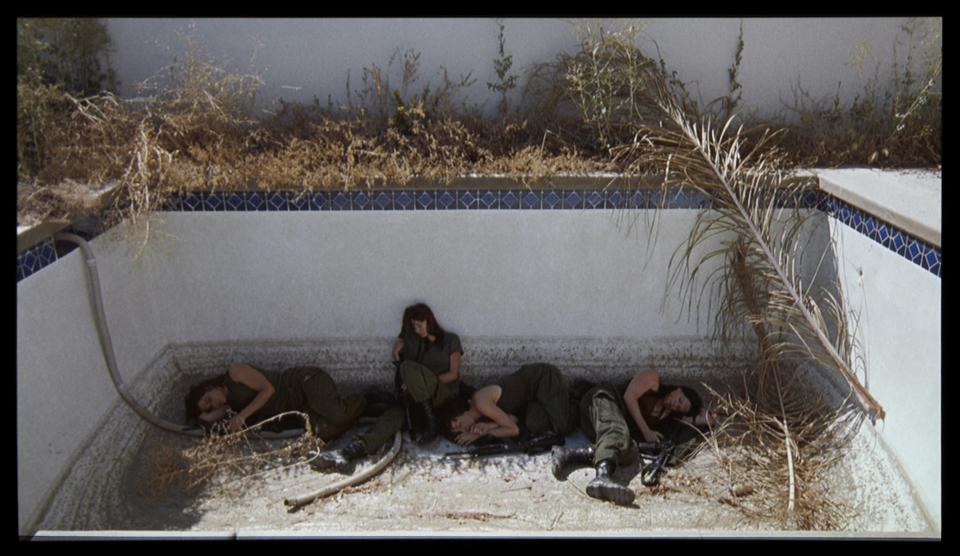
News
Garber Announces Advisory Committee for Harvard Law School Dean Search

News
First Harvard Prize Book in Kosovo Established by Harvard Alumni

News
Ryan Murdock ’25 Remembered as Dedicated Advocate and Caring Friend

News
Harvard Faculty Appeal Temporary Suspensions From Widener Library

News
Man Who Managed Clients for High-End Cambridge Brothel Network Pleads Guilty
As Foster Finalist, Siegel's Profile Rises
Honored as a promising local artist, VES professor Amie Siegel looks ahead to making her mark on the international art scene

A major concern within the contemporary art world: if only the works of a few artists are ever displayed, how can cultural institutions promote innovation and creativity? The Institute of Contemporary Art (ICA) in Boston hopes it has the answer to this question—every two years, bring in totally new faces.
Amie Siegel, a professor on leave in the Visual and Environmental Studies (VES) department, is currently a finalist for the James and Audrey Foster Prize, a biennial grant awarded by the ICA to a local artist showing promise. The exhibit, featuring nine local artists, will be running through January 17, 2011. A panel of national judges will choose one of the works to receive the final prize—$25,000 to put towards their craft.
The individuals chosen are nominated by their peers, their teachers, and other artists in their community.
“It’s a prize about people who are being talked about. The best application is to be out there,” says the event’s curator Randy Hopkins. Siegel’s exhibit is a two-part creation consisting of a 20-minute film and a collection of photographic images. She says the inspiration to use film as her medium of choice originally developed in high school.
“I was always very taken with how people didn’t know how to talk about film. And yet it’s a mass art form. You know, you go to films with adults who say things like, ‘the cinematography was beautiful.’ But, a film is its cinematography, so it didn’t feel like quite enough of an understanding,” she says. “There seems to be a block in the ability to talk about film and its form, film as an art form, to speak about it formally.”
During her time off from Harvard, where she teaches advanced studio art courses dealing with video and photography, she has been filming and editing her work for the Foster Prize, as well as preparing her installation for another show opening in Berlin.
“Black Moon,” Siegel’s film currently on display at the ICA, is a quasi-science-fiction movie featuring shots of female soldiers roaming the post-apocalyptic Californian countryside. The piece was shot in Florida and California’s Inland Empire, areas with some of the highest foreclosure rates in the country. She placed her revolutionaries—women fighting an unseen aggressor in a scene out of a science fiction movie—within this setting.
“What I found [in the houses] out there were these barriers and barricades, and I kept thinking that things looked like a battle, some sort of strange war had occurred, which seemed very interesting given that our country is involved in several wars abroad,” she says. “So I had the idea to come back and bring this troupe of female revolution quasi-soldiers, rogue bandit types, and put them in the landscape and have a sort of science fiction story.”
“Black Moon” is loosely based upon the 1974 Louie Malle film of the same name, which also features a gender-neutral battle field.
“I have an ongoing relationship to remaking things, treating other films as musical scores and text to perform, which is not how we classically think of the cinema,” she says. “It’s how we think about theater or music, that there exists a script, a play, a score to perform or interpret. With films, the only remakes that exist are for financial reasons, or to import or export something so that it’s palatable for consumerists in a new country.”
Instead of “remaking” films, Siegel uses them as jumping off points, a script of sorts to reinterpret. In one of her latest films, “Berlin Revisited,” she took shots of pre-war East Germany and recreated them exactly after the fall of the Berlin Wall. Siegel saw the effect as a compression of past and present, watching the same moment played simultaneously decades apart. While the destruction of East Germany and the wasteland of Southern California may have a similar look, Siegel interprets them differently.
“In “Black Moon” I think you’re confronted with a different kind of ruin [than in “Berlin Revisited”],” she says. “It’s a very recent ruin, of the real estate bubble, and so it’s a ruin of a future that never came to be.”
—Staff writer Eleanor T. Regan can be reached at eleanor.t.regan@college.harvard.edu.
Want to keep up with breaking news? Subscribe to our email newsletter.
